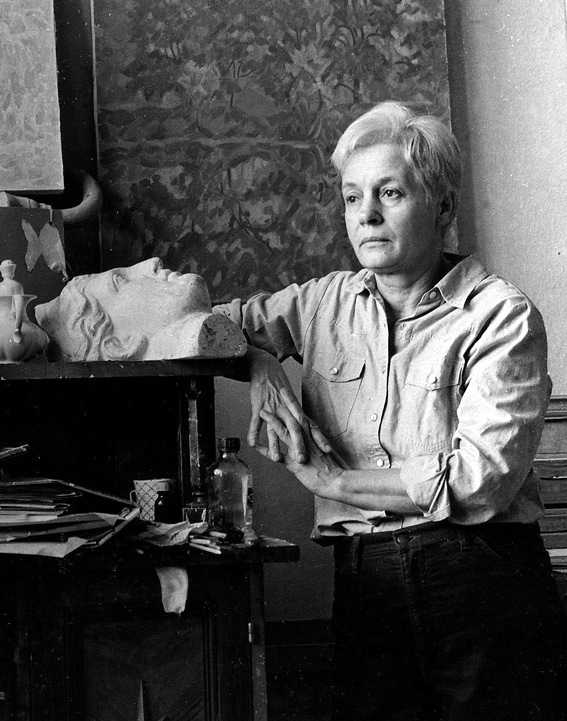Halyna Hryhorieva (born on April 26th, 1933, Kyiv) is a famous Ukrainian painter.
Graduated from the Republican School of Art named after Taras Shevchenko, and with Zoia Lerman was among the first graduates. Friendship with Lerman-Lutskevich family the Hryhorievs will carry through the decades.
In 1959 graduated from the Kyiv State Art Institute (Ilarion Pleshchynsky’s atelier of book illustration). Thanks to the cher maitre Halyna got acquainted with the art of the early twentieth century and the ideas of the Russian avant-garde. In the 1959-64s, she worked in Robshkola and Dytvydav publishing houses.
After graduation established an entire group of young artists who opposed the ideas of socialist realism – Halyna Hryhorieva, Zoia Lerman, Akim Levich, Anatolii Lymarev, Ihor Hryhoriev, Heorhii Yakutovych, Mykhailo Vainshtein, Vladyslav Mamsikov, Yurii Lutskevych and Oleksandr Ahafonov… In the 1970s, their works were not being exhibited so artists were making private presentations in the studio of Halyna’s father, artist Serhii Hryhoriev, but because of the denunciation there was a scandal in the Union of Artists. KGB took interest in them. The starting point of free creativity Halyna Hryhorieva calls the notorious “exhibition of nine” (Kyiv, 1985). Soviet critics and journalists criticized works by calling the exhibition “milk-and-water”. The audience almost for the first time in many years saw the works of talented and adult artists.
The greatest impact on the oeuvre of the artist made works of Giotto di Bondone, and then – boichukist’s oeuvre, with which she got acquainted in the vaults of the Ukrainian Museum.
As Halyna says herself, ‘Mission of the artist in my view is really a gift of the Heavenly City, I am sure we have a living memory of paradise, which, of course, was, and where we lived, where everything was in harmony, where there was no evil, where was love for each other and where really “the lamb will lie down with the lion.”’
Works of the artist are held in the Ukrainian National Museum, Museum of Kyiv History, and Lviv National Museum, in the collections of Gradobank and Digital Equipment Ukraine, as well as in private collections in Ukraine, European countries, Canada, and the United States.
